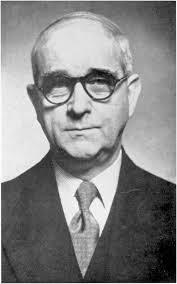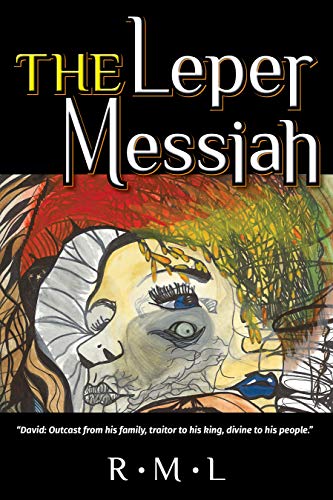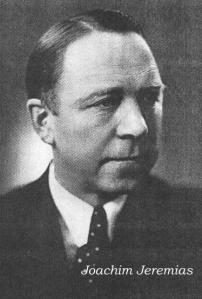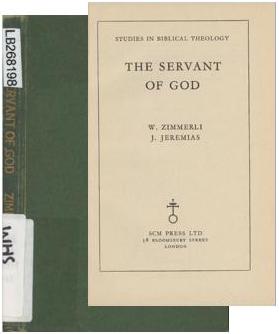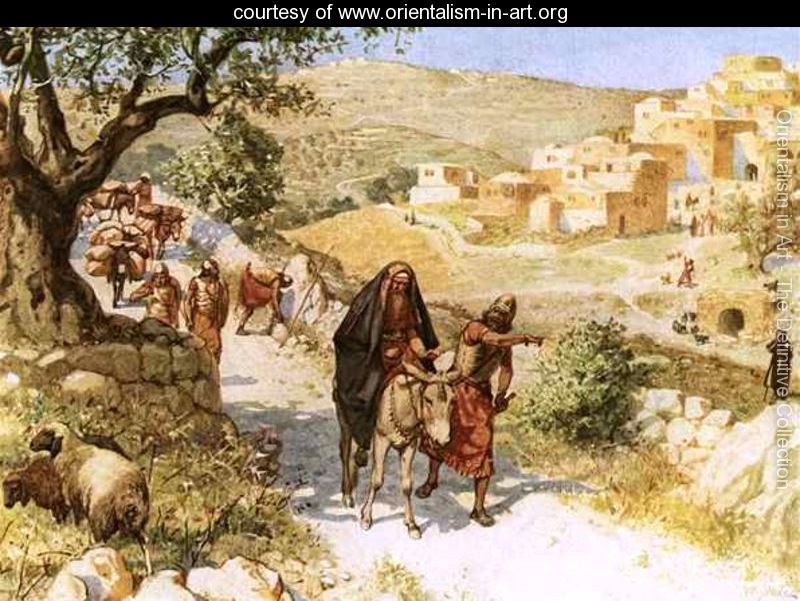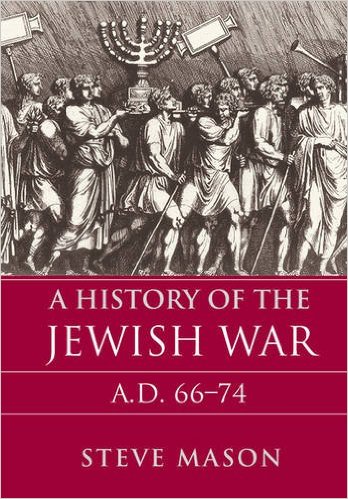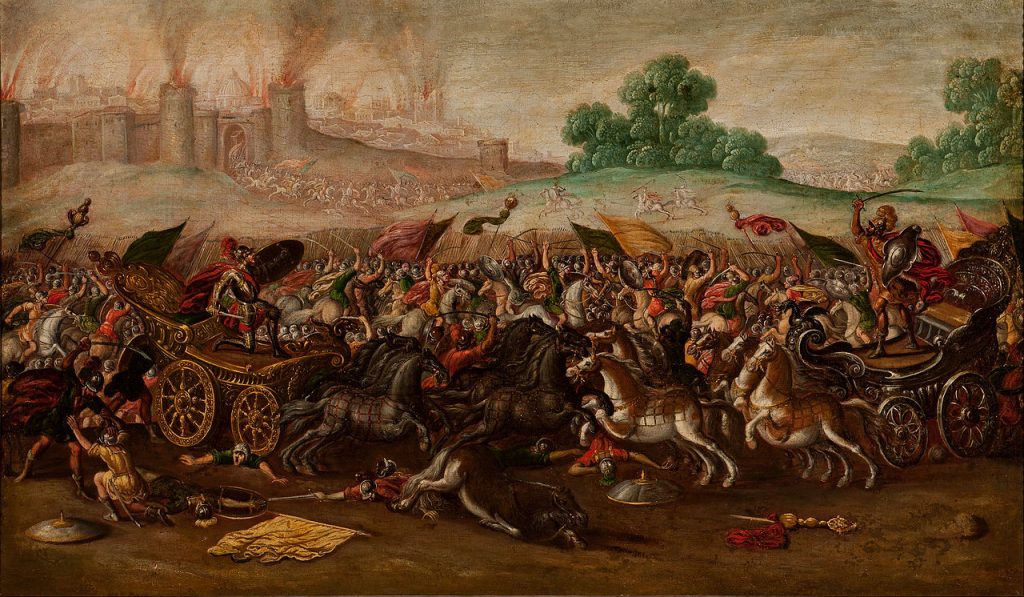Critique of the Gospel of John
by Bruno Bauer
—o0o—
415
Appendix.
(To p. 142.)
The Messianic Expectations of the Samaritans.
The question whether the Samaritans were a purely pagan or a mixed people, formed from pagan and Israelite parts, is easily answered, if one appreciates the biblical data, the nature of the matter and the historical analogy. If the strict Chaldean conqueror took away only the most important families from Judah and left the mass of the people in their homeland, it is even less to be assumed that all citizens of the ten-tribe kingdom were transferred from their country to the eastern provinces of the empire after the conquest of Samaria by the Assyrians. It is easy to say that all the inhabitants were taken away, and to pronounce the word “all”, this so often “misused” hyperbole, costs little effort, but in reality the momentum of this hyperbole is very degraded, and to transfer all the inhabitants at once from a mountainous country, which offers so many places of refuge and hiding places, is impossible even for the greatest power. Not a few, but a great many of the Israelites will still have lived in their land when those five pagan tribes were transferred there by the Assyrians, since not even the religious zeal of the Hebrews had succeeded beforehand in completely cleansing the promised land of the original Canaanite inhabitants. It is also an absurd notion and only an exaggeration of the legend to say those five heathen tribes were sent into the completely deserted area of the early ten-tribe realm, in order to take possession of it and to inhabit it, it is much more probable or rather certain that they were sent there from the cities to keep in check the Israelites who had been pushed into the countryside and to render them forever harmless. But if we see in the whole course of world history how always the conquered peoples, when they were on a high standpoint of education and consciousness, spiritually subdued the invading conquerors, it explains to us how by living together with the Israelites the heathen tribes, which they were supposed to keep in subordination, were brought to the recognition of Jehovah. The foreign overlords were also not completely out of all religious relationship with the former owners of the land, their pagan nature service was not foreign to the Israelites and formed very easily the bond which would bring the victors and the vanquished closer to each other and unite them. But now the Israelites, as long as their separate kingdom existed, had united the thought of Jehovah with the figurative conception and with the service of nature, and as this thought, while the pleasure of the conception was satisfied in the natural, had become a meager abstraction, so it could also in the course of time and without effort be excluded from the foreign tribes and at first still merged with their idolatry, until it finally reached a kind of sole dominion. Certainly, it did not take the lions to make the foreign tribes fear Jehovah, and it is only the Jewish legend that sent the ravening beasts against the pagan colonists, because it only knew how to explain their conversion in an external way.
416
Although the Israelites who had remained behind had gained the spiritual upper hand over those heathen tribes, they were at the same time too weak spiritually to be happy about their victory and to assert it with consciousness. They themselves were not sure enough of their principle; the entire development of it that had taken place in the kingdom of Judah had remained alien to them and could not have had any effect on them, and they had not allowed themselves to be drawn into the movement that had started with David, so that they had only the unfinished and uncertain idea that, before David’s appearance, could only with difficulty hold its own against the hostile powers. They won, but unconsciously, by gradually growing together with the fresher life of the colonists, who now regarded themselves as the nucleus of the new nation-building and gave the newly formed masses the ambiguous consciousness that they were an independent people, originally alien to the law and yet again belonging to Jehovah. When the Jews returned from the Babylonian captivity, this transformation had already taken place. The building of the sanctuary on Gerizim softened the feeling of the original alienation from the law and served to strengthen their claims, according to which they, like the Jews, thought they belonged to Jehovah, but it did not prevent them from remaining conscious of their special nationality and from perverting it when it seemed otherwise useful to them. Only in very late times, it seems, after the Jewish folk life had long since perished and a habit of centuries kept the Pentateuch connected with their view, did the idea that they were descendants of Jacob come to reign supreme among them.
417
When the Pentateuch reached the Samaritans, whether they received it from the Israelites of the Ten Tribes, or whether it was brought to them by the Jewish refugee Manasseh, is not our concern here, since the question of whether they were expecting the Messiah, as we will see shortly, is completely independent of the decision of this question.
418
The reason why the question of the messianic expectation has always been answered incorrectly is that the essence of the messianic ideas among the Jews has been so much misunderstood until now. That which was a conception that emerged in the utmost spiritual distress, but was again temporary in ordinary life, was regarded as a fixed, positive dogma *) and what even the prophets saw only momentarily, what the prophets never worked out and combined into a comprehensible unity and objectivity, was regarded according to this way of looking at things as a concept of reflection that had already formed the center of the general consciousness of the people long before the exile. Once the living movement of history is included in this mechanics, then it is self-evident that the citizens of the northern kingdom, who remained faithful to the law, also experienced everything that the prophets in Judah prophesied about the Messiah, that they willingly accepted this dogma and that also those Israelites, who remained in their country after the fall of Samaria and let themselves be reformed by Josias, professed the dogma of the Messiah and from now on held it steadfastly **). It is Sanballath who united the native, Israelite population of the northern kingdom and the immigrated strangers to one people by the arrangement of an independent cult on the mountain Gerizim and the people of the Samaritans who arose in such a way took care to derive from the Pentateuch the dogma of the Messiah which was already known and familiar to them ***).
*) Thus Frederick de Chrisologia Samaritanorum, 1821, speaks constantly of a decretum Messianum Judaeorum or of a dogma Messianum. E.g. p. 22- 61.
**) Friedrich, I. c. p. 25, 42.
***) Ibid. p. 61.
419
It does not change anything in the matter, but remains the same externality and incorrectness of the historical view, if one does not go so far back and lets the “dogma” of the Messiah reach the Samaritans only later *), for example after the establishment of the sanctuary on the Gerizim. The O. T. does not know dogmas, it knows only of commandments and, from the prophetic point of view, of views – but who will call these views, which break forth only momentarily in the highest historical collisions, which are neither fixed any prophet nor united around a fixed point, articles of doctrine, to which it is, however, only peculiar that they dominate consciousness in the form of objectivity and that they can also be communicated because of this objective relation? The transformation of the prophetic view into an intelligible concept of reflection, which we first find in the Chaldean paraphrase, and the appearance of Jesus are not far apart, and even if countless Jewish defectors from the time of Manasseh to the end of the second century before Christ had gone over to the Samaritans, they could not bring them what they did not have at home.
*) Like Hengstenberg, the authenticity of the Pentateuch, I, 30.
It seems very certain, however, that just in the century before the appearance of Jesus, that is, in the time when the most important prerequisite for the coming of the Kingdom of Heaven was being formed and completed, the gulf between the Samaritans and the Palestinian Jews had become so wide that all spiritual contact between the two sides had ceased.
Meanwhile, a colony of Samaritans had come to Egypt through Alexander the Great, and in Alexandria, under the Ptolemies, Jews and Samaritans lived together *), certainly not only in dispute over the legality of their Temple service, but in such a way that both sides were drawn into the freer spiritual movement of that world school of philosophy and criticism. The religious conception of the Samaritans agrees with that of the Alexandrian Jews and Philo in the most important points, but especially in the fact that everything that seems to draw the divine down into the change and into the barrier of the finite is removed **); their dogmatic expression has similarity with that of the Egyptian Jews and their Pentateuch coincides with the Alexandrian translation of the Seventy in the essential features, as well as in a large number of smaller peculiarities. But if Hengstenberg ***) uses this correspondence to prove that the Samaritans had borrowed “the doctrine” of the Messiah from the Jews, he only proves how badly this unhistorical conceit stands. Was not the enlightened point of view of the Alexandrian Jews the farthest away from the conception of the Messiah and what does Philo know to tell about the coming of the Messiah? Nothing! His Logos cannot enter into the flesh and blood of the empirical history.
*) Joseph. Antiq. Lib. XI, c. 8, 6 XIII, c. 3, 4.
**) Gesenius, de Samaritanorum theologia p. 6.
***) ibid. p. 30.
420
If the Jews could so completely obliterate the traces left in their minds by a thousand years of history when they made friends with the Greek education in Egypt, and if they could bend the movement of the Principle, which was aimed at the condescension of the divine into the empirical present, and lead it into the abstract intellectual world, what could be expected of the Samaritans? What then was to be expected from the Samaritans, who without that historical mediation had appropriated only the abstraction of Jewish consciousness and must always have the feeling of alienation from the concrete Jewish world? The idea of the Messiah not only remained stranger to them than to the Alexandrian Jews, but reflection and enlightenment became even freer and more decisive among them, and when Epiphanius and Leontius say of them that they denied the resurrection and the angels, we have no reason to doubt these reports.
421
What does it mean when theologians unanimously conclude from the account of the fourth evangelist that the Samaritans expected the Messiah and thought of him as a prophet *)? It means nothing more than that the believing habit can remain trapped in the letter for thousands of years before it first examines it and brings it together with the life of the real events. But while the habit can still be excused by its age and its firmness, the guilt begins where the habit itself enters into reflection and adorns itself with thoughts about itself. For once one has crossed over into the realm of reflection, one falls even deeper into error if one does not seriously strive toward the goal, and one can finally only spread the error sentimentally. This false sentimentality and love is found in its whole development in the assertions that the Samaritans “were less held by the bonds of rigid Pharisaism, and therefore easily turned to the Gospel” **) and that among them “the political element of the Messiah idea, as among the Jews, was not opposed to the Gospel” ***). But Pharisaism was just the last Jewish consequence, the existence of the law developed to the subjectivity of a school, as such it proves just the ability of the Jewish spirit to develop, just as it sharpened the need of redemption in the end, since it drove the minds to the longing for liberation by the burden with which it weighed them down. What do the Samaritans have to show in a similar way? And as for the political element of the Messiah idea among the Jews, it was so far from being an obstacle to the Gospel that it rather prepared the historical place for salvation among this people, since it merged the immediate self-feeling of the nation with the Messianic idea. If it also stood in opposition to the Gospel of the Crucified, it was only what always happens in history, that precisely the closest historical preconditions are also most capable of opposing their higher result, while at the same time they make the historical world more receptive to the acceptance of the result. And how important has not the Jewish conception of the royal office of the Messiah become for the Christian community, since it contained the outline of the image of the Messianic reign, which the Lord had not yet assumed in his lowly appearance, but which he will exercise at his glorious return?
*) Z, B. Gesenius de Sam. Theol. p. 41.
**) Olshauscn, Comm. II, 121.
***) Neander, Gesch. der Pflanzung p. 49.
422
Simon Magus the Samaritan, his appearance among his countrymen, his preaching of himself as a great man, the Samaritans’ opinion of him as the great power of God (Act. 8, 10.): All this cannot prove in the least that the Samaritans were expecting the Messiah. Since the angels were regarded by the Samaritans as the abstraction of divine will and divine power, and since they were familiar with the image of the angel of Jehovah from the Pentateuch, it could well have happened that they, touched by the Christian idea, saw in Simon this power of the Godhead that had momentarily emerged in the angel of Jehovah in the past. But for this it was necessary to be touched by the Christian idea, and how unstable is this possibility. If we look at how the author of the Acts of the Apostles is familiar with the idea of the “power of the Most High”, how he lets the personality of Jesus be generated from this power (Luke 1:35), how Jesus is also a “Great One” to him (1:32), it is only too obvious how he is the one who used predicates, which according to his view belong to Jesus alone, to paint the false image of the true Messiah. Simon’s view of himself and that which his compatriots had of him have thus become completely unknown to us: and from an unknown greatness one would not want to dare to infer the ideas of the Samaritans? Simon Magus has thus become as unknown to us as if he had never existed, and he can no longer rise above the value of an unhistorical person. Only this much is certain that for the author of the Acts of the Apostles Simon Magus was already the same as he remained for the church, the lying image of the true Messiah and the arch-father of all heretics. Later teachers of the church have only enlarged and more closely defined the person of Simon and his blasphemous fame by themselves with their richer historical experiences. Jerome, for example, tells us that Simon said of himself: I am the Word of God, I am the Glorious One, I am the Paraclete, I am the Almighty, I am the All of the Godhead. It is a naive, but also a fearful – namely all historical view eclipsing – impartiality, with which Olshausen looks at this note of Jerome. “If this statement, he says, admittedly only belongs to the later Christianizing direction of Simon, it still shows what this man was capable of.” *) As if that note does not only prove what the later ecclesiastical writers were capable of when it was necessary to describe a heretic *).
*) Comm. II, 687.
*) Of course, we cannot consider more historical than Jerome’s note what Irenaeus I, 20 and Epiphanius 21, C. I report about Simon, namely that he pretended to be the father among the Samaritans and the son among the Jews. But in this note, as in some others that we find in the Church Fathers, we can see a certain historical instinct that really depicted historical circumstances in the mythical form of historical pragmatism. Thus, the legend of Simon’s sermon is certainly formed with the right tact, which found out that the religious consciousness of the Samaritans was not as far developed as that of the Jews and that the idea of the Messiah remained unknown to them.
424 [corrected from 224]
As a witness that the Samaritans expected the Messiah, Winer **) calls Justin Martyr. However, this apologist, who was himself a Samaritan ***), has no small importance in this matter. If now Justinus places the Jews and Samaritans as One group opposite the Gentiles ****), then this can neither alienate us nor be considered as a special instance for the present question, because as worshippers of the One they were after all closer to the Jews than to the Gentiles. But when Justinus – and Winer refers to this – at the same time describes the Jews and Samaritans as those who “possessed the word of God handed down through the prophets and always expected Christ”: this is a hyperbole which at least does not make us feel as if we were listening to a sober witness. How can it be said of the Samaritans that they possessed the word handed down by the prophets?
**) Biblical Real Dictionary II, -139.
***) Just. Mart. opp. p. 52, 349.
****) Ibid. p. 88.
425
Whoever speaks in this way immediately proves that his testimony is invalid. If Justinus had a better insight, then he fell at that point only involuntarily into the track of the later conception and language and the same happened to him what happened to the fourth evangelist when he described the stay of Jesus among the Samaritans. Since the law and the abstraction of the one connected the Samaritans with the Jews, since they were the next foreign circle to be opened to the gospel, this success of the doctrine of salvation among them could not be explained in any other way than by the idea that they had also accepted the prophetic promise with the law and were thereby prepared for the gospel. But if Justinus does not fall into the path of a priori talk, if he speaks from empirical experience, then he proves that he had in fact a better insight and that the matter was quite different. In the introduction to his dialogue with Trypho he tells how he himself was led to the prophets and to their testimony of the true God and of the Christ, and he presents this testimony as such, which until then had been completely foreign and unheard of to him *) – proof enough that the Samaritans also possessed no trace of messianic views.
*) Ibid. p. 224. 225.
When in more recent times the Samaritan Pentateuch came to Europe and with the later literature of the Samaritans became the object of thorough investigations, nowhere was there even a hint of messianic expectations. And yet it would have been at least possible that the Samaritans in the course of the centuries would have taken the idea of the Messiah from the outside, as it is certain, for example, that they have appropriated the idea of the resurrection *). As little as one can conclude from the late occurrence of this view a thousand years back, so little one could conclude, if in the so-called book of Joshua or in the chronicle of Abulphatach the expectation of the Messiah would be found, that the Samaritans at the time of Jesus would have hoped for the Messiah. But even later there is not the faintest hint that could lead to such a wrong conclusion. Hottinger, for example, who has thoroughly investigated the literature of the Samaritans known at that time, could not find any reliable information from which it would be certain that the Samaritans had excluded the expectation of the Messiah into the circle of their ideas. Reland knows nothing else to say in this regard than that “in the Samaritan chronicles there is also mention of a great angel and that by him the Messiah seems to be understood”. **). It is right that Reland presents this remark only as an assumption, because it is only too certain that by that great angel only the highest of the forces emanating from the Godhead is to be understood ***) and that Reland only came to this assumption because he could not think of it otherwise than that the Samaritans cherished messianic expectations, and now had to reach for the most remote to see the general prejudice apparently confirmed.
*) Hottinger, dissertationum theologico-philologicarum fascic.1660 p. 11.
**) Reland, Dissertationum miscell. pars II, p. 27.
***) Reland ibid. p. 21.
426
In the correspondence which some European scholars have maintained with the Samaritans since the time of Scaliger, one believes to be informed now quite definitely about the messianic conceptions of the same ****). But one should consider how dependent and unoriginal that sunk and never truly substantial people have shown themselves to be in these negotiations, how indefinite and vacillating their answers to the questions about their messianic ideas are, and how the questions of the European scholars are nothing but questions of suggestion, which are only repeated in the answer without the question mark.
****) Gesenius de Sam. theol. p. 41.
427
If the Samaritans were really expecting the Messiah, one would think that they would have spoken about it for sure, but they do not like to explain themselves about this “point” *). Of course, because they do not know anything about it and believe to do a favor to their supposed compatriots and to put themselves in their favor, if they answered them, what these approximately wished. For they certainly do not even know what they wanted to hear, what they thought of the Messiah **), so they can only help themselves with some vague phrases. As soon as the good scholars ask more specifically, the echo also gives a more specific answer and the Samaritans know how to speak in more detail. When, for example, Marshall *) tells them to tell him who that prophet is of whom the Lord spoke to Moses, and when the same scholar describes the Messiah according to the three classic passages of the Pentateuch (Gen. 49, 10, Num. 21, 17, Deut. 48, 15), it goes without saying that the Samaritans do nothing more in their answer than to repeat this description. “You speak, they answer, of the coming of that great prophet of whom God spoke to Moses, he is the one of whom it is written” – and now follow the quotations which they first learned to know through Marshall’s inquiry as proofs of the Messianic promise. But in order not only to repeat the words of the question, but at least to write something new, they say: “This is the very prophet who was promised to our father Abraham, when it is said (Gen. 15, 47) that there smoked an oven and a flame of fire **). One sees, it became hot to the Samaritans, before they found a new place of proof. If the Samaritans had hoped for the Messiah for two millennia and were limited only to the Pentateuch to prove their expectation as a divine promise, then they would have puzzled over a multitude of proofs, so they did not need to be led by European scholars to proofs and more definite ideas and they did not need to make themselves ridiculous, if they now also dared to enter the field of scriptural research.
*) As even Silvester de Sacy must admit. Ueber den gegenwärtigen Zustand der Samaritaner, Franks, a. M. 1814. p. 5l.
**) e.g. already to Scaliger they write (Repertorium für bibl. und moiqenl. Literatur Th. 13. p. 291): Nos vero ignoramus, quaenam sit fides tua, an eadem sit, quam nos profitemur, an illa quam Judaci profitentur. In the letter they sent to Ludolf in 1684, they ask him (Epistolae Samarit Sicbem. ad Jobum Ludolfum Cizae 1688 p. 5): Nunc autem quaesumus a tu, o domine, ut nuncies nobis, quaenam revera tua sit religio? quisuam pro- pheta tuus? Num tu ex nobis Samaritanis? In the same letter they say that there was an exchange of letters between them and their brothers in England, but that they have not continued it for five years, adeo ut nun eerto eognoverimus veritatum religionis eorum et fidei illorum. (Ibid. p. 6.)
*) Repertorium for Biblical and Oral Literature. Lit. Ninth part. p. 12-14.
**) Ibid. p. 27.
428
If the word Messiah appears in the question, the Samaritan is embarrassed in answering whether he should use the same word. Why? Because the Samaritans know quite well that the expectation of the Messiah is peculiar to the Jews, and because after so many clumsy experiments they had finally become suspicious and uncertain about the views of the inquirers, so that they no longer knew quite what the latter wished to hear. How do they do it now? When their rich, powerful brothers speak of the Messiah, they remark at least casually in the postscript to the answer: “we know his (the prophet’s) name completely, as the rabbis call him ” or another time they indicate this name only by the initial letter ( מ) )*. The meaning of these answers is no other than: we do not really know how we are with you and what your view of the matter actually is, therefore, read out of our answers what you want and what you like – by the way, send us the contribution and the sum of money – these play a large and naive role in this correspondence – which you must send us if you are our brothers.
*) Silv, de Sach, op. cit. p 51.
429
But what about that Taheb, so celebrated in the biblical commentaries, that Messiah of the Samaritans, so spiritually conceived? In their letter to Scaliger they write: “you have asked about the Messiah: his name is none other than השהכ ” and with it they have given work to the scripture researchers and theologians for three and a half centuries. According to Hengstenberg this name designates the Messiah as the restorer, restitutor **), according to Gesenius as the convert ***), but the Samaritans themselves do not know anything definite about this name and if they are asked to explain, they do with the word secretly like people who do not want to let others notice their ignorance and embarrassment. “It is a great secret, the word of Taheb, who shall come” writes Salameh in the year 1810 *). If Taheb had indeed been the name of the Messiah among the Samaritans, it would have appeared in their writings, it would have been infallibly blackened by the careless nation in their Pentateuch, it would have been used much more often in their letters and they would have known exactly why it was the excellent name of the Messiah. However, they never mention Taheb in their letters when they give a detailed account of their religion and their faith, but only when the European scholars had forcefully pressed them to say what they thought of the Messiah, they touch this matter with a few words. In the first letter to Ludolf, who had certainly asked them very eagerly about the Messiah, because they ask him for information about who his prophet is, they give all the main points of their religion, but do not mention Taheb or Messiah with a single word. How striking it is, however, when in the same letter they rather call Moses their prophet and mediator in this world and on the day of the last judgment **). Only in the third – actually second – letter, after Ludolf had brought up the Messiah again, they write to him: “You ask whether the Messiah has arisen. He has not come yet, but when he comes, his name is Taheb.” *”). On the other hand, in the first letter, which they had sent to England a few years before, they write that one should tell them what the name “Haschaheb”[Taheb?], which is supposed to come, is *) – so perhaps they themselves do not know quite how they should use this word towards their supposed compatriots? Or do they first want to know how they want it to be used?
**) Christol. I, I, 69.
***) de Sam. theol. p. 44: reductorem vel conversorem i. e. prophetam homines ad meliorem frugem revocaturum.
*) About the present Just. p. 50.
**) Epist. Samar. Sichem. Cizae 1688 p. 9,
***) Repector, for bibl. and morgenl. Lit. 13 p. 281.
*) Ibid. p. 292. Nolices et etraits. T. XII. p. 181.
431
Four times the word Taheb occurs in the letters of the Samaritans – and it is fortunate that it appears more than once, otherwise one could too easily be driven to the suspicion that Ab Sehuta himself had formed the word for the Messiah, in order to be able to write something definite to Scaliger. Four times is not often, but just think how often a Jew of that time, if he should describe the religion of his compatriots, had mentioned the Messiah, how much he would know to say about him. It is true that the four times **) mentioning of the name must lose weight, because the Samaritans prove it too clearly in their letters, that they speak of the Messiah only of necessity, when the Europeans penetrate them too much, and then they know to assign to the Thaheb in the system of their religion much too little a fixed place. But nevertheless it remains striking that a century after Ab Sehuta in the letters of the Samaritans the name Thaheb appears again and then in the newest time in the letter of Salameh it is mentioned even if as an inexplicable secret. If this repetition were not there, one would be allowed to assume that Ab Sehuta had reached for some attribute of Jehovah and let it act as Messiah in a kind of personification. But if it is certain that this word must be of religious meaning, it is just as certain that it cannot designate any arbitrary attribute of the divine, but must contain a relation of the divinity to the world and to history, which is not altogether foreign to the conception of the Messiah.
**) In the Samaritan song in which Gesenius found the Thaheb, Messiah (de Samarit. theologia p. 45), the deity is rather addressed and asked that he may turn to his own. The word, in which Gesenius thought to find the Thaheb, is not the participle, which would then lack the article anyway, but the imperatio. Silvestre de Sacy, in the Notices et extraits.T. XII. p. 29. Gesenius hard also abandoned his explanation again: Berliner Jahrbücher 1830. no 82.
432
The mysterious word can not designate the Messiah as the return leader, converter or restorer, at least Hengstenberg can no longer want to give this meaning to the word, after he has again correctly noticed that never degenerates in transitive meaning” *). Hatthaheb therefore means the one who turns around, the one who returns.
*) The authenticity of Pent, I, 104.
The Samaritans often speak in their letters of a day of vengeance and retribution, of a time when Jehovah would step out of the distance and alienation in which he now held himself during their miserable, oppressed condition and turn back to them, and as the returning one, as the one who graciously turns back to his apostate and punished people, Jehovah had to appear to them, if they wanted to grasp him in his highest attribute. This attribute of the graciously turning Godhead must have been especially important to every Samaritan and could easily come to his mind when he was asked whether he believed in the Messiah. But it would have been impossible that the answer would have turned out three times always after the interval of a century as it happens in letters, if Hatthaheb == the returning one would have designated pure, so to say abstract attribute and not rather a more vivid manifestation of Jehovah. The idea of such a manifestation of the divine was very close to the Samaritans in their view of the angels, in whom the power of the divinity appeared directly, and if we now read that they believed in a great angel, who had especially protected the people, but had departed from them after the apostasy, then it is as certain as only possible that they expected in the return of the same the appearance of the divinity turning to them again. In the passage of the so-called Book of Joshua, in which this great angel is mentioned *), also Hottinger suspects an analogy with the Jewish messianic expectation: how, he remarks to the word “great angel,” if it meant the Messiah? but like Reland, he dares to express his assumption only tentatively. For there is too great a difference between the fixed reflective concept of the Messiah, as it was held by Jewish consciousness, and this shadowy, fading figure of the Great Angel, which disappears into the impersonal. In that concept of reflection of the Jews, the personality of the Messiah is so securely encompassed and so independent that we could almost say that it is a historical personality, namely historical in the world of consciousness, of which it really unites all relations in it. That great angel, on the other hand, has become so little an independent personality for the view that it rather disappears without inner support and core in the Godhead as its power.
*) If the people falls away from the law, Jehovah will leave it et recedent Angeli de latere vestro et nomen Angeli Maximi destituct vos auxilio, Hottinger, Smegma orieutale p. 491.
433
If we now summarize what has been said so far, how nothing in the testimonies of antiquity speaks for the existence of the view of the Messiah among the Samaritans, everything rather speaks against it, how in their more recent letters, when they develop their religion in detail, they know nothing to say about the Messiah, how only after the suggestive questions of their supposed compatriots, what they thought of the Messiah… they let fall a few words about a Thaheb, If they let fall a few words of a Thaheb, it cannot be called exaggerated doubtfulness or wilful denial, if that form of messianic expectation, which is usually attributed to the Samaritans, is denied to them.
434
Even if the Samaritans had great hopes of coming into agreement with their European compatriots, they could not have gone so far as to write them nothing but a deliberate, pure lie. For this reason alone, because they did not really know how they would get along with them, they could not dare to present them with an arbitrary invention as their faith. The only thing they could do, and what they really did, was to reach for that which they could assume would most agree with the ideas of their countrymen.
Since the whole so-called messianic expectation of the Samaritans is based on the fact that they hoped that Jehovah would one day turn to them again graciously, free them from their miserable pressure, and that he would do it in the special form of the returning one, we need neither raise nor answer the question when this expectation was formed among them. For this expectation is nothing more than the simple view, which is found in the Pentateuch, according to which Jehovah turns away from his people, when they fall away from him, but turns back to him according to the counsel of his long-lasting grace. Only so much we would dare to assert that in the first time, which the Samaritan people experienced as such and in which it settled into its own cult with the freshness and with the self-confidence, which was at all possible for it, there was still no special occasion for this view of the Pentateuch to become particularly important to it. It is probable that only the pressure of later centuries and the resistance of the small, narrow family to the constant threat of ruin, along with the feeling of misery, revived the hope of return.
——————————-

